What you should know about ticks (care and prevention).
Tick.

This arthropod can transmit infectious diseases to both animals and humans. There are things you should know to avoid these diseases and take care of your health and that of your family.
To beat your enemy you must know him first. Here you will find information that can be very useful, , with or without pets.
¡The Garrapata!
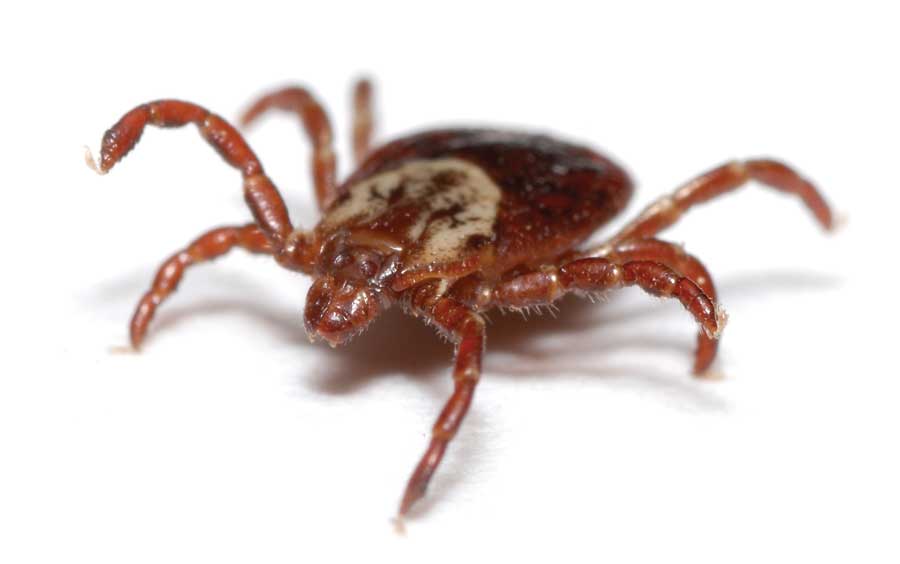
This arthropod, , is an external parasite, of the mite order, family Ixodidae, of the arachnid class, Ectoparasite behavior (lives from another organism) and is characterized by being hematophagous (habit of being nourished with blood), carrier of many infectious diseases. It consists of 2 sectors, the gnathosome and the idiosome.
Gnathosome:
It is endowed with a prosoma.The prosoma is comprised of:
Eyes.
A pair of chelicerae (mouthpiece to pierce the skin).
A Hypostome (piece with spines to be fixed to the skin).
A pair of pedipalps (sensory antennas).
Idiosome:
It is equipped with a unified thorax and abdomen and is where the legs meet. There are also reproduction devices in the lower part.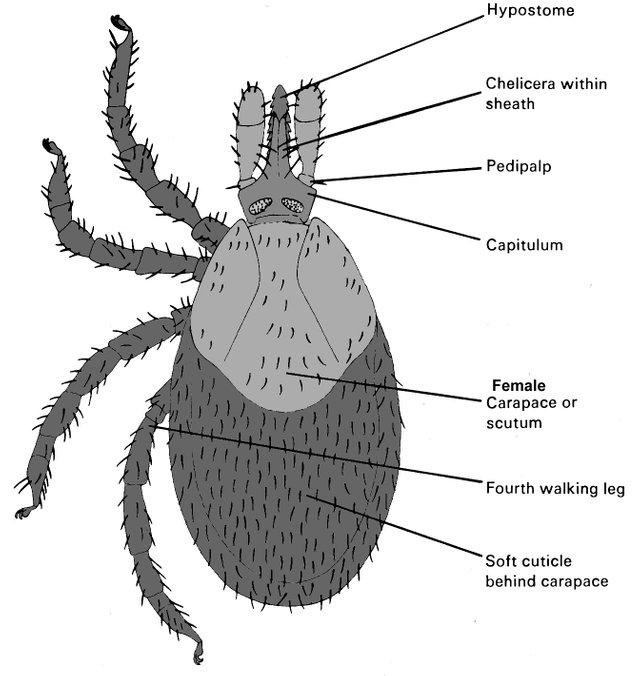
This arachnid goes through 4 phases in its life cycle.
Egg, larva, nymph and adult.
They preferably inhabit places of abundant vegetation, including gardens. In the course of its development, before reaching maturity propose to suck the blood of different victims, including man or end your cycle with an individual.
After the eggs hatch (break the shell), at that moment the larvae begin the search for a victim, when they locate it, they climb to the animal in search of the skin, preferably soft areas such as the ears, around the eyes and between the eyes. fingers of the legs. They suck the blood of the victim for the first time, then the larva leaves the host to go through a process called molt and become a nymph to start looking for another source of food or perhaps the same. After the second round of food and transformed into a nymph, it feeds again, falls to the ground or in the bushes, becomes an adult and then goes back to look for food, looks for its prey or returns to look for it. Growing up to 4 times its size in only 5 or 7 days and considerably increasing its weight.
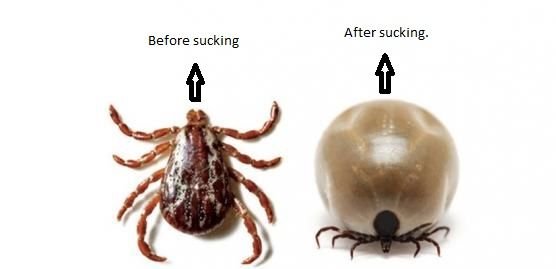
At the time of reproduction they copulate, even if they remain in the affected creature. Uniting the reproductive organs located in the lower part of the idiosome.
Left female - Right male.
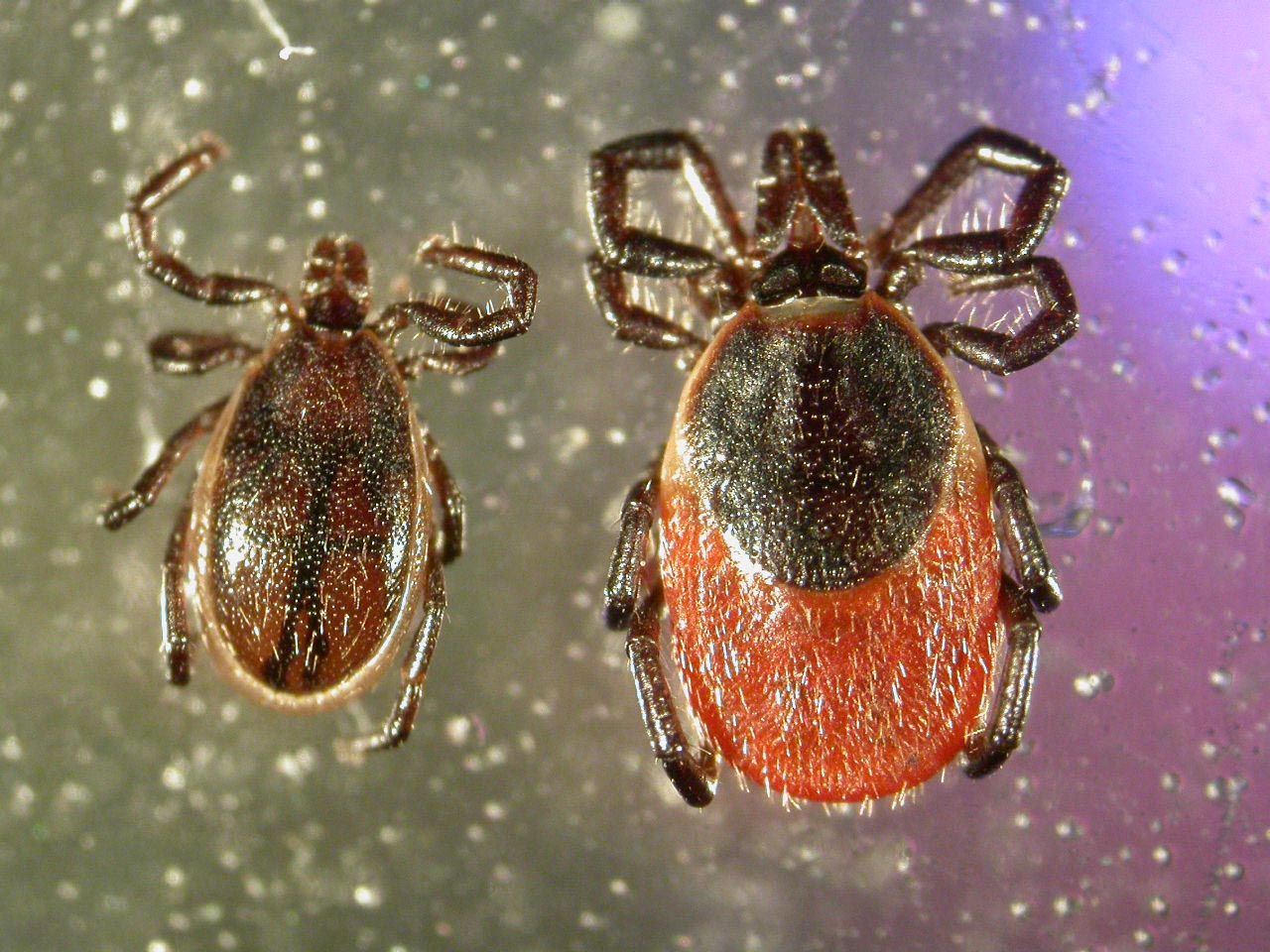
The female reproductive system consists of an ovary (reproductive organ and secretor of sex hormones and ovules), an oviduct (passage of the ovary abroad) and a genital orifice. The male consists of testicles (spermatic funicle), vesicles (seminal glands).
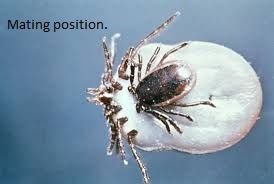
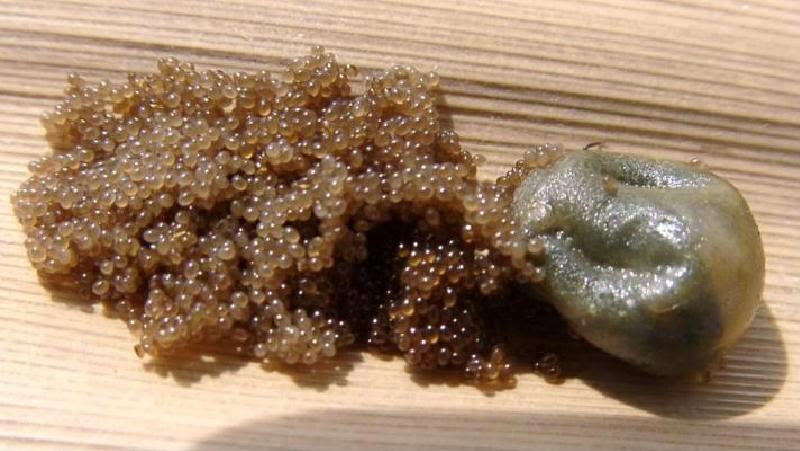
As it adheres to the host's skin.
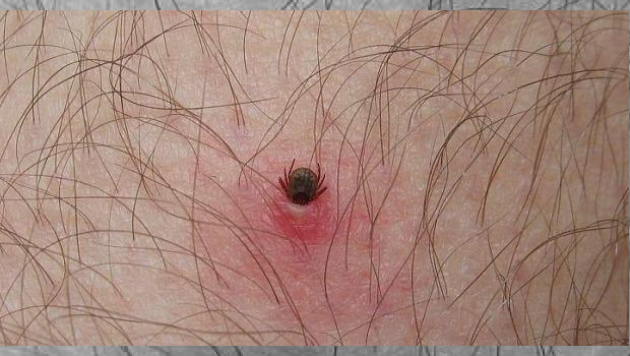
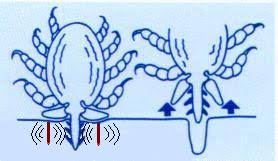
It also secretes a substance around the mouthparts that hardens to be fully adhered, This fixing substance is responsible for skin diseases. The pathogenic molecules that he inoculates through saliva, are responsible for inflammation, soften the cavity where it feeds and facilitates the entry of a large part of the body.
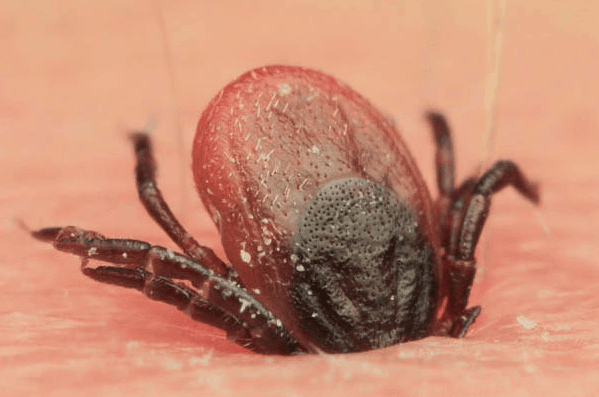
I do not want to leave aside that at the same time of the suction, it also regurgitates the intestinal content through the same route of inoculation, collaborating with the transmission of diseases.
This mite has the ability to paralyze your digestion process to leave the reserve of blood deposited and be able to spend months without looking for food. It can also transmit numerous diseases such as:
Tularemia, Rickettsiosis, Mediterranean botanical fever, Tifu, Rocky Mountain fever, encephalitis, meningoencephalitis, canine hepatozoonosis, Kyasanur disease, babesiosis, bovine fever, among others. Some can lead you to death.
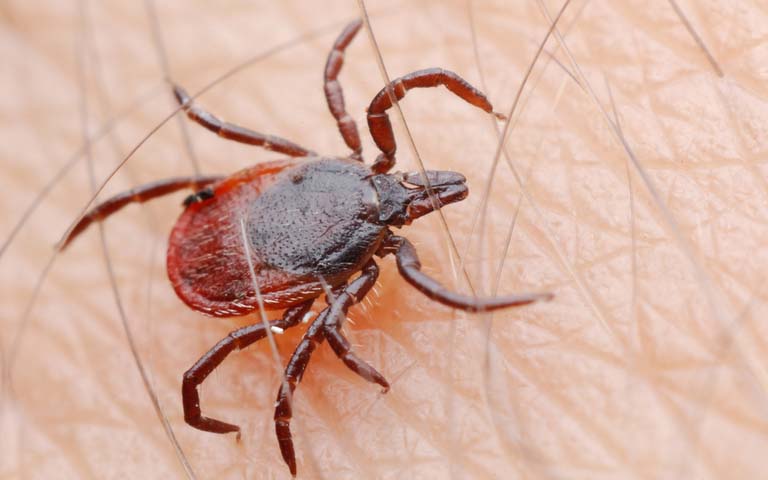
Some recommendations that we should take into account.
If you are going to remove a tick attached to the skin, have a hyssop on hand, an eyebrow tweezers, container or airtight bag and latex gloves.
Use the clamp to apply pressure as close as possible to the chelicerae and pull up carefully, If you are not careful, you may leave parts of the tick in the cavity that cause infections.
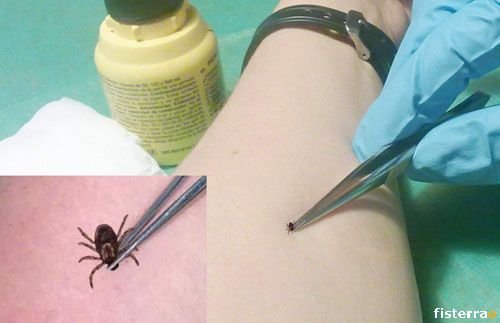
Place all ticks in a container or place them in an airtight bag.
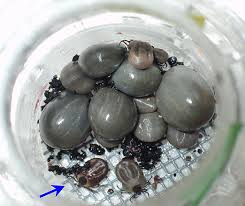
Now take the swab to clean the cavity, make sure there are no particles left in the wound, if part of the body remains, use a needle to remove them.
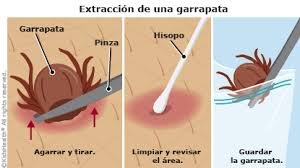
It is not advisable to expose yourself to fire, or spray gasoline or kerosene, neither alcohol, much less crush them, They can remain eggs in the area and the idea is that they disappear. If you handle the parasite without gloves, it can contaminate you with infectious pathogens.
To prevent, vaccinate your pet throughout the year and periodically wash the pillow where you sleep.
Sources of information used:
http://www.merial.com.ar/pet_owners/Pages/garrap1.aspx
https://es.wikipedia.org/wiki/Ixodoidea
Source of images:
Source
Source
Source
Source
Source
Source
Source
Source
Source
Source
Source
Source
Source
Nice post!
I've had a couple of encounters with those little bastards, luckily they've all been fairly benign!
suerte hermano, gracias por su visita. Saludos.
Interesting information
Gracias por tu visita @marialaura. Saludos.
Excelente post @nicomax, realmente muy educativo.
These things have followed me my entire life. I once had dozens of them crawling on me at once. It felt like water was running down my body. Terrible!!